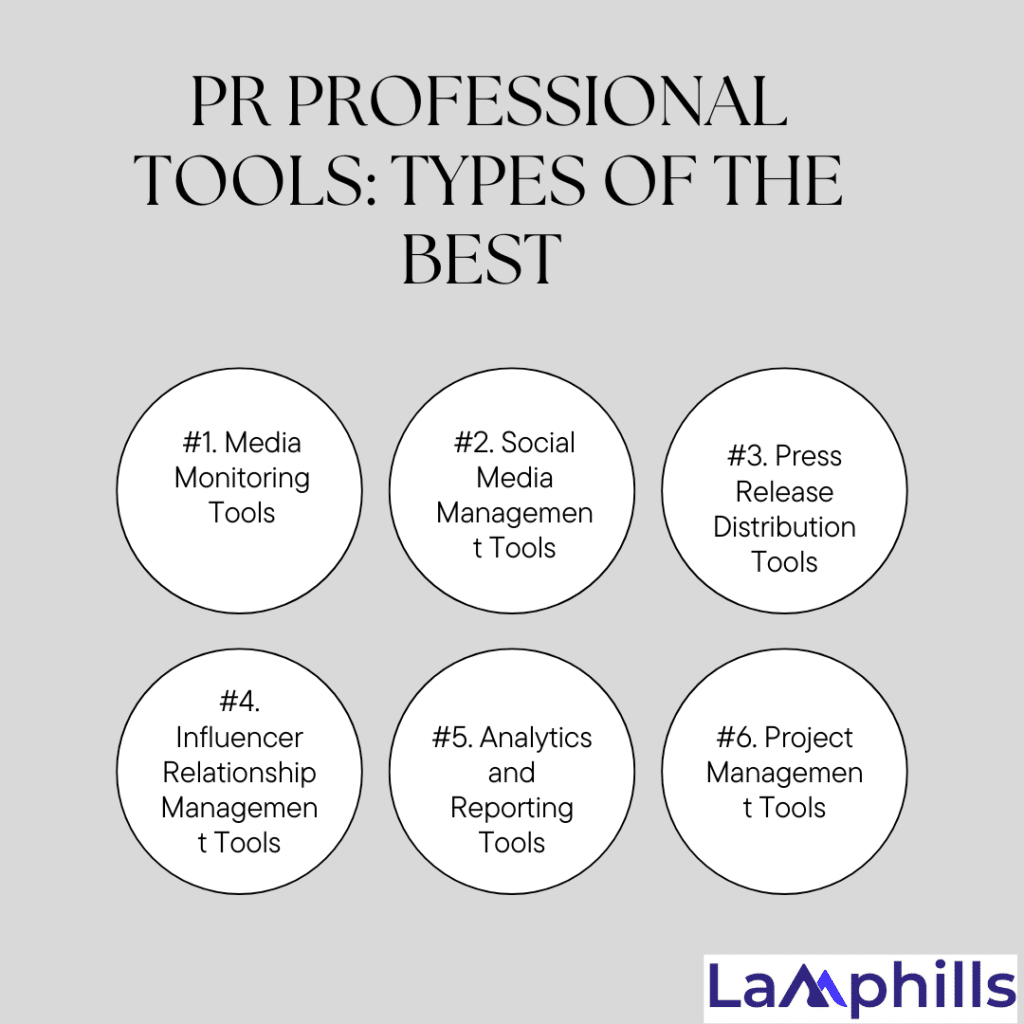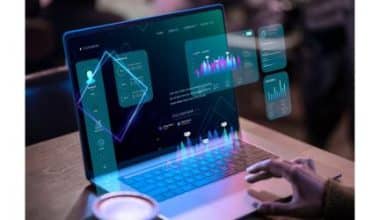I remember one of the most difficult tasks I’ve ever worked on. It was a campaign for a startup that was launching a novel product, something never seen before in the market. The pressure was enormous. This is because we were a small team with huge ambitions, and we wanted to create a big sensation in the media. Despite our best efforts, we continuously felt like we were chasing shadows. Our out-of-date procedures for tracking media mentions and managing outreach were just ineffective. As a result, we missed crucial mentions, our social media approach was disorganized, and our press releases were frequently overlooked. It was a frustrating situation, and we knew we needed a change.
Now the result of that change is the reason behind this article, I’m here to show and explain the best tools for PR professionals that can significantly boost your PR approach just like it later did for us. Each tool I’ll discuss has been tried and tested, not only by industry experts but also by myself and my team in the world of real-world public relations campaigns. I’ve witnessed firsthand how these tools can transform a failing campaign into a resounding victory. Let’s look at each category of tool and how it can help you with your public relations efforts.
Key Takeaways
- Public relations is a strategic communication strategy that involves conveying information to the public on behalf of a firm.
- Public relations tools enable organizations to engage and connect with customers, investors, and employees, as well as track the progress of their public relations campaigns.
- There are several categories of digital public relations tools. Each category contains information on what the tools accomplish, how they might improve your public relations, and tool samples like media monitoring tools, press release distribution tools, Influencer Relationship Management Tools, Reporting tools, etc.
What is Public Relations?
Public relations is a strategic communication strategy that involves conveying information to the public on behalf of a firm. The objective of sharing this information is to establish a mutually beneficial relationship for both parties. The corporation receives appropriate media exposure for any upgrades, planned product launches, etc., and the public benefits from the news.
Moving on, another definition of public relations is to recognize that the role of a public relations firm is to “expose” your brand (*under the proper spotlight, of course), your internal values, any newsworthy content, and so on, to stakeholders or people who will be directly affected by those updates.
In addition to that, a public relations stunt might be used to promote an imminent product launch. Meanwhile, the general public will eagerly await the product’s release and ensure that they are the first in line to purchase it. This is the type of situation that benefits both parties from a business standpoint.
What are Public Relations Tools?

Public relations tools for professionals enable organizations to engage and connect with customers, investors, and employees, as well as track the progress of their public relations campaigns. These tools help PR professionals market their services or products and can influence their overall exposure and reputation. Public relations tools include news releases and media partnerships. These tools assist businesses in attracting new clients and increasing their total profits.
One of the most effective ways to capture the attention of your target audience and investors is to have your brand mentioned in a credible article, news report, journal, or blog post. To accomplish this, you’ll need to use the best public relations tools available whether you’re a seasoned PR professional or just getting started. You can use public relations techniques to boost your brand’s visibility, get more leads, and even gain media opportunities that you would not have had otherwise.
PR Professional Tools: Types of The Best

With so many digital PR tools and software options available, it’s easy to become confused and even upset while determining which tools are ideal for your PR needs—or whether you even need them at all. The PR business has long joked that Excel is the most popular tool. It isn’t particularly hilarious. — Stephen Waddington
Fortunately, modern PR tech stacks are gaining acceptance as the PR tools and solutions used by agencies and in-house teams evolve. Most public relations practitioners employ at least one component of the stack, such as media monitoring tools, media list-building solutions, or online newsroom software. However, there are many alternative solutions available.
The following sections contain several categories of digital public relations tools. Each category contains information on what the tools accomplish, how they might improve your public relations, and tool samples. Keep in mind that many of these categories and tools overlap, so you may see the same tools mentioned more than once.
#1. Media Monitoring Tools

One of my most memorable PR experiences was when I worked for a promising tech firm. We had just released a new app, and our goal was to make a splash in the media. I remember the excitement in the office, the phones ringing off the hook, and the continual buzz. But there was a catch: we employed manual ways to track media mentions. Every morning, we would personally search newspapers, blogs, and social media, trying not to miss any important news. It was chaotic and inefficient.
Then I discovered media monitoring tools, which was like finding a secret weapon. We first used one for the same tech startup. Then, we had a new feature upgrade to market, and this time we were ready. The technology tracked every mention of our brand across many media outlets in real-time. In the end, we could instantly see who was mentioning us, what they were saying, and how they felt about it. It changed our strategy, allowing us to be proactive instead of reactive. Below are a few PR Professional Tools:
a. Meltwater
- Features: Meltwater offers extensive media monitoring capabilities, covering online, print, broadcast, and social media. Its analytics tools provide deep insights into trends, sentiment, and the overall impact of your media presence.
- Benefits: With Meltwater, you can track the reach and engagement of your mentions, identify key influencers, and stay ahead of industry trends. It’s an all-in-one solution that helps you understand your media footprint.
- Pricing: Meltwater provides custom pricing based on the specific needs and size of your organization. This flexibility ensures you get the features you need without overpaying for services you don’t use.
B. Cision
- Features: Cision is renowned for its comprehensive media database and powerful real-time media monitoring. It covers a wide array of media outlets and offers customizable reports and detailed analytics.
- Benefits: Cision’s real-time alerts ensure that you never miss an important mention. Its in-depth reports help you measure the effectiveness of your campaigns, making it easier to justify your PR efforts to stakeholders.
- Pricing: Cision’s pricing is tailored to your requirements, which means you only pay for the features and services that are most relevant to your needs.
Cision is trusted by PR professionals worldwide to streamline their communication efforts, build relationships with media contacts, and achieve better results in their PR campaigns. It’s a versatile tool that offers a comprehensive suite of features to meet the diverse needs of PR and communication teams.
C. Mention
- Features: Mention specializes in real-time monitoring of online and social media. It allows you to track brand mentions, competitors, and industry trends across various digital platforms.
- Benefits: Mention’s easy-to-use interface makes setting up and managing your monitoring efforts straightforward. The insights provided by Mention help you engage more effectively with your audience and stay ahead of the competition.
- Pricing: Mention offers a range of pricing plans, including a free version for basic monitoring and more advanced plans for comprehensive analytics and reporting.
#2. Social Media Management Tools

I can clearly remember the excitement and confusion of organizing my first significant social media campaign for a well-known fashion brand. It was during the introduction of their new seasonal collection. We had a rush of posts planned, a full calendar of material, and high expectations for participation. However, the laborious scheduling, frequent monitoring, and the challenge of maintaining a consistent brand voice across all channels proved daunting. At times, it felt like attempting to tame a tornado with a push broom.
Then a coworker introduced me to social media management tools. It was a revelation. We could now schedule posts ahead of time, monitor all of our social media accounts from a single dashboard, and analyze our performance using granular metrics. It was like going from driving a rickety old car to cruising in a sleek, high-tech vehicle.
Social media has emerged as a key component of public relations, providing a direct channel to your target audience as well as a platform for developing and managing your brand’s image. Efficient management of these channels is essential for ensuring that your message is consistent, current, and engaging. Let’s look at some of the best social media management tools that help a PR professional manage public relations initiatives.
Top Tools
a. Hootsuite
- Features: Hootsuite offers a comprehensive suite of tools for managing multiple social media accounts. It allows you to schedule posts, track engagement, and measure your social media performance with detailed analytics. You can also monitor relevant conversations and mentions, helping you stay informed about what’s being said about your brand.
- Benefits: Hootsuite’s intuitive interface and powerful features make it easy to manage all your social media activities from one place. It helps you maintain a consistent posting schedule, engage with your audience effectively, and analyze your efforts to see what’s working and what’s not.
- Pricing: Hootsuite offers several pricing plans, starting with a free version that allows for basic functionality, up to enterprise-level plans with advanced features and analytics tailored to large organizations’ needs.
B. Buffer
- Features: Buffer is known for its simplicity and ease of use. It lets you schedule posts across various social media platforms, track engagement, and analyze the performance of your content. Buffer also offers a feature to create and schedule stories on Instagram and Facebook, which is a great addition for visual storytelling.
- Benefits: Buffer’s clean and user-friendly interface makes it a favorite among many PR professionals. It helps you plan your content calendar, ensures timely posts, and provides valuable insights into your audience’s behavior and preferences.
- Pricing: Buffer offers a free plan with basic features, and its paid plans start at an affordable rate, making it accessible for small to medium-sized businesses. Advanced plans include more comprehensive analytics and additional team members’ access.
C. Sprout Social
- Features: Sprout Social provides a robust platform for managing your social media efforts. It combines social media management with customer relationship management (CRM) capabilities. Sprout Social allows you to schedule and publish posts, monitor social conversations, and analyze your social media performance in depth.
- Benefits: Sprout Social stands out for its powerful analytics and reporting features, which help you understand your social media impact and refine your strategies. The tool’s CRM capabilities allow you to manage your audience relationships effectively, making your engagement more personalized and impactful.
- Pricing: Sprout Social offers a range of pricing plans, starting with a 30-day free trial. The paid plans are on the higher end but provide extensive features suitable for businesses looking for in-depth analytics and comprehensive management tools.
The launch of a new eco-friendly skincare line was one campaign that showed the relevance of social media management tools. Our strategy was mainly reliant on creating buzz and engagement through social media. We had influencers lined up, a series of posts planned, and a hashtag campaign ready to launch.
We used Hootsuite to plan all of our posts, ensuring that our messaging was consistent and timely across Instagram, Twitter, and Facebook. Then we created streams to track mentions of our brand and campaign hashtag, allowing us to interact with our audience in real time. This real-time involvement was important. When a popular influencer posted about our product, we were able to quickly respond, amplify their post, and engage with their followers, turning their endorsement into a larger conversation.
#3. Press Release Distribution Tools

Assume you’ve just written the perfect press release. It’s brief, entertaining, and newsworthy. You press the send button, but there is no response. There was no response, so no coverage. This scenario is a PR professional’s nightmare, and I’ve been through it more times than I’d like to admit. Early in my career, I believed that the quality of the press release alone would guarantee media coverage. Even the best press releases can fail if they are not distributed effectively, as I rapidly realized.
Effective distribution of news releases is critical. It’s not enough to merely send out your news; you must also ensure that it reaches the appropriate people, at the right time, and in the correct format. A good distribution tool helps you target specific journalists, track the reach and impact of your release, and ultimately, maximize your chances of getting coverage. Here are some top tools that have made a significant difference in my PR efforts.
Top Tools
a. PR Newswire
- Features: PR Newswire offers extensive distribution networks, reaching thousands of journalists and media outlets worldwide. It provides targeted distribution options, allowing you to tailor your release to specific industries, regions, or topics. PR Newswire also includes analytics to track the performance of your press releases.
- Benefits: The reach and credibility of PR Newswire are unmatched. By using this tool, your press release can potentially reach a vast audience, increasing the chances of media coverage. The analytics help you understand the impact and refine your future releases.
- Pricing: PR Newswire’s pricing varies based on the distribution options and add-ons you choose. While it can be pricey, the extensive reach and robust features often justify the cost for high-impact campaigns.
B. Business Wire
- Features: Business Wire provides global distribution to major news outlets and industry-specific media. It offers multimedia support, allowing you to include images, videos, and other rich media in your releases. The platform also provides detailed analytics and reporting.
- Benefits: Business Wire’s multimedia capabilities help your press releases stand out, making them more engaging for journalists and readers. The detailed analytics offer insights into who is reading your releases and how they’re being shared, helping you measure success.
- Pricing: Similar to PR Newswire, Business Wire’s pricing is based on distribution options and additional features like multimedia. It’s a premium service, but the enhanced visibility and engagement can be worth the investment.
C. GlobeNewswire
- Features: GlobeNewswire focuses on delivering your news to targeted media contacts and investor communities. It supports multimedia content and offers comprehensive reporting and analytics. GlobeNewswire also provides translation services for global distribution.
- Benefits: GlobeNewswire’s focus on investor relations makes it an excellent choice for financial announcements and public companies. The translation services are particularly useful for international campaigns, ensuring your message is accurately conveyed in multiple languages.
- Pricing: GlobeNewswire offers competitive pricing with various packages based on your distribution needs. It’s generally more affordable than PR Newswire and Business Wire, making it a good option for smaller businesses or startups.
#4. Influencer Relationship Management Tools

Influencers have emerged as a key component of current public relations strategies. Their ability to connect with and engage audiences through original material makes them invaluable for brand marketing. However, managing influencer connections can be complicated and time-consuming. This is where influencer relationship management (IRM) tools come in.
I remember the first time I worked on an influencer campaign. It was for a cosmetics company unveiling a new line of skincare products. We had this brilliant notion to collaborate with beauty influencers to generate awareness and authenticity around the items. However, manually contacting influencers, negotiating deals, and tracking their material proved burdensome. We rapidly recognized that using a spreadsheet to manage these relationships was insufficient.
These tools streamline the process, helping you identify the right influencers, manage collaborations, and measure the impact of your campaigns. Here are some top PR tools that can make your influencer marketing efforts more efficient and effective as a professional.
Top Tools
a. AspireIQ
- Features: AspireIQ provides a comprehensive platform for managing influencer relationships. It helps you find the right influencers through detailed search and discovery features. You can manage campaigns, track performance, and communicate directly with influencers all within the platform.
- Benefits: AspireIQ’s powerful search capabilities allow you to identify influencers who perfectly match your brand’s values and target audience. The integrated communication and tracking features streamline the entire process, from initial outreach to campaign analysis.
- Pricing: AspireIQ offers customized pricing based on the needs of your business. It’s a premium tool, but the depth of features and efficiency it brings to managing influencer campaigns can justify the investment.
B. Traackr
- Features: Traackr focuses on influencer discovery, relationship management, and campaign measurement. It offers a robust database of influencers, detailed analytics, and tools for managing multiple campaigns simultaneously. Traackr also provides insights into influencer performance and audience demographics.
- Benefits: With Traackr, you can build long-term relationships with influencers who have genuine influence over your target audience. The analytics and reporting features help you understand which influencers drive the most engagement and ROI, enabling you to optimize your strategies.
- Pricing: Traackr offers tiered pricing plans to accommodate different business sizes and needs. It’s a scalable solution, making it accessible for both small businesses and large enterprises.
c. Upfluence
- Features: Upfluence is known for its influencer search engine and campaign management tools. It allows you to search for influencers based on a variety of criteria, manage outreach, and track the progress and performance of your campaigns. Upfluence also offers e-commerce integrations to directly measure sales impact.
- Benefits: Upfluence’s detailed search filters help you pinpoint the best influencers for your brand. The campaign management tools ensure smooth collaboration and effective tracking. The e-commerce integration is particularly beneficial for brands looking to tie influencer efforts directly to sales.
- Pricing: Upfluence offers flexible pricing plans, including options for smaller businesses. Its scalability makes it a good choice for companies of all sizes looking to enhance their influencer marketing efforts.
One of the most memorable influencer campaigns I worked on was for a tech gadget company launching a new wearable product. We chose to create buzz by collaborating with tech enthusiasts and fitness influencers. Initially, we attempted to manage the influencer outreach manually, but this rapidly got overwhelming. That’s when we went to AspireIQ.
We used AspireIQ to find influencers who met our criteria: they were tech-savvy, fitness-focused, and had a large following. We found an influencer who not only had a significant following but also really liked our product. In the end, we were able to negotiate conditions and track material delivery with ease using AspireIQ’s communication tools. When influencers publish, we can monitor engagement and impact in real-time. The campaign was a huge success, generating significant buzz and driving sales.
#5. Analytics and Reporting Tools

When I first started in PR, I immediately discovered that simply launching a campaign was insufficient. Clients and stakeholders sought confirmation that our efforts were effective. I remember working on a large-scale campaign for a healthcare client. We were following the rules: press releases, social media campaigns, and influencer collaborations. However, when it came time to submit our findings, we had little tangible evidence to demonstrate the impact. We were confident in the campaign’s success, but we lacked the analytics to back it up.
That’s when we started using analytics and reporting tools, and the change was dramatic. These technologies not only helped us measure the success of our ads but also supplied insights that directed us.
In the end, they allowed us to demonstrate the ROI of our efforts, making our PR initiatives more credible and data-driven. Here’s an in-depth look at some top analytics and reporting tools that can help elevate your PR strategy.
Top Tool
a. Google Analytics
- Features: Google Analytics is a powerful tool that tracks and reports website traffic. It provides detailed insights into where your visitors are coming from, how they interact with your site, and what actions they take. With its integration capabilities, you can track the impact of your PR campaigns on website traffic and conversions.
- Benefits: The major benefit of Google Analytics is its depth of data and the ability to segment audiences to understand their behavior. It’s free to use, making it accessible for businesses of all sizes. The tool’s comprehensive reports help you understand what’s working and what’s not, allowing for data-driven decisions.
- Pricing: Google Analytics offers a free version with robust features. For larger enterprises, there’s Google Analytics 360, a paid version that provides additional capabilities and enterprise-level support.
B. Cision Communications Cloud
- Features: Cision Communications Cloud offers extensive media monitoring, analysis, and reporting capabilities. It tracks your media coverage across print, online, and social media. The tool provides sentiment analysis, share of voice metrics, and detailed reports on your PR efforts.
- Benefits: Cision’s integrated platform allows you to monitor your media presence and measure the impact of your PR campaigns from one place. The sentiment analysis helps you understand the public perception of your brand, while the share of voice metrics let you see how you stack up against competitors.
- Pricing: Cision offers custom pricing based on the specific needs and scale of your business. It’s a premium tool, but its comprehensive features can provide significant value, especially for larger campaigns and organizations.
c. Meltwater
- Features: Meltwater provides a suite of tools for media monitoring, social listening, and PR analytics. It offers real-time tracking of your media mentions, detailed analytics on your media coverage, and the ability to measure the reach and impact of your PR efforts.
- Benefits: Meltwater’s real-time tracking ensures you stay informed about what’s being said about your brand as it happens. The detailed analytics help you measure the effectiveness of your campaigns and refine your strategies. The platform’s comprehensive reporting capabilities allow you to present clear, actionable insights to stakeholders.
- Pricing: Meltwater provides custom pricing based on your organization’s needs and the scale of services required. It’s tailored for businesses that need robust media monitoring and analytics capabilities.
#6. Project Management Tools

When I first began directing public relations efforts, it was like juggling a dozen balls at once. Coordinating with team members, tracking deadlines, coordinating work, and ensuring everyone was on the same page proved difficult. I recall a particularly chaotic project in which emails flew back and forth, documents became lost in lengthy email threads, and critical deadlines were missed. That’s when I recognized we needed a more systematic approach to managing our operations.
Enter project management tools. These technologies altered the way we worked by offering a centralized platform for everyone to collaborate, track progress, and stay organized. They ensured that our initiatives ran smoothly, deadlines were met, and our team could focus on what we do best: generating compelling public relations campaigns. Here’s an in-depth look at some top project management tools that can enhance your PR workflow.
Top Tools
1. Asana
- Features: Asana is a powerful project management tool that helps teams organize their work. It offers features like task assignments, project timelines, due dates, and progress tracking. Asana also supports integrations with various other tools, making it a versatile addition to any PR team.
- Benefits: Asana’s intuitive interface and robust features help keep everyone on the same page. Tasks can be assigned to team members with clear deadlines, ensuring accountability. The timeline feature provides a visual representation of the project schedule, making it easy to track progress and adjust as needed.
- Pricing: Asana offers a free basic plan suitable for small teams and individuals. For more advanced features like project timelines and custom fields, the Premium plan starts at $10.99 per user per month. There’s also an enterprise option with custom pricing for larger organizations.
2. Trello
- Features: Trello uses a card-based system to manage projects. It allows you to create boards for different projects, with cards representing tasks. Each card can have checklists, due dates, attachments, and comments. Trello’s visual layout makes it easy to see the status of each task at a glance.
- Benefits: Trello’s simplicity and visual appeal make it a favorite for many PR teams. The drag-and-drop functionality allows you to move tasks through different stages easily. It’s highly customizable, enabling you to set up boards and cards in a way that best suits your workflow.
- Pricing: Trello offers a free plan with basic features. For more advanced functionalities like integrations, automation, and priority support, the Business Class plan is $12.50 per user per month. There’s also an Enterprise plan with custom pricing for large teams.
3. Monday.com
- Features: Monday.com provides a flexible work operating system to manage projects, tasks, and workflows. It offers various templates, automation, time tracking, and integrations with other tools. The platform’s visual dashboards help you monitor project progress and team performance.
- Benefits: Monday.com’s flexibility allows you to tailor the platform to your team’s specific needs. The visual dashboards provide a clear overview of ongoing projects, making it easy to identify bottlenecks and track milestones. Automation features reduce repetitive tasks, allowing the team to focus on strategic work.
- Pricing: Monday.com offers a free plan for individuals. The Basic plan starts at $8 per seat per month, providing access to core features. For more advanced features like time tracking and integrations, the Standard plan is $10 per seat per month. The Pro and Enterprise plans offer even more functionality at higher price points.
Use Case: Managing PR Campaigns and Tasks Efficiently
Let me tell you how adopting a project management platform improved our PR workflow for a significant client campaign. We were collaborating on a high-profile product launch for a technology company. The campaign required collaboration with numerous parties, including the product team, marketing, external agencies, and influencers. We chose Asana for this project. Here’s how it helped.
- Task Assignment and Deadlines: Using Asana, we established a comprehensive project plan that divided the campaign into smaller projects with specific deadlines. Each task was assigned to a team member, ensuring that everyone understood their roles and timetables. This degree of detail made it easier to keep things on track.
- Project Timelines: We used Asana’s timeline feature to plan out the full campaign calendar. This graphic model made it simple to understand how tasks were interconnected and identify potential bottlenecks. It also enabled us to change deadlines and reassign work dynamically as the project proceeded.
- Centralized Communication: Rather than going through lengthy email threads, we used Asana’s comment and attachment functionality to preserve all project-related communication
You can also make reference to the checklist below,
What are the 4 P’s of PR?
As we reflect on the significance of the ‘4 P’s’—Publicity, Public Perception, Promotion, and Persuasion—
What are the traditional tools of PR?
Traditional PR is a traditional, direct approach to public relations that utilizes staple channels such as television, radio, newspapers, and magazines to manage public opinion.
Why use PR tools?
PR tools can be used to create a positive image for the company, promote its services and products, and establish relationships with the public. They can also be used to help protect the organization from negative publicity and generate positive press coverage.
Conclusion
As I reflect on my journey in the PR world, I can’t help but think about the times when managing a PR campaign felt like navigating a ship through stormy seas. There were moments of chaos, miscommunication, and missed opportunities. But with the right tools like the ones I have listed and explained in detail, those turbulent waters became much calmer and more navigable.
References
- prowly.com
- indeed.com
- blog.hubspot.com
- explodingtopics.com






